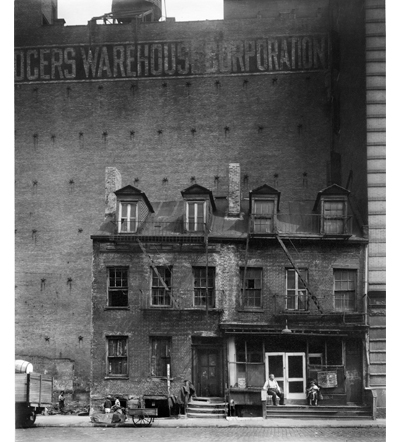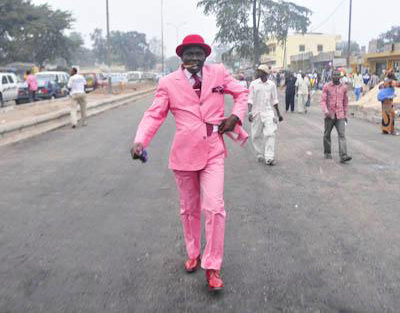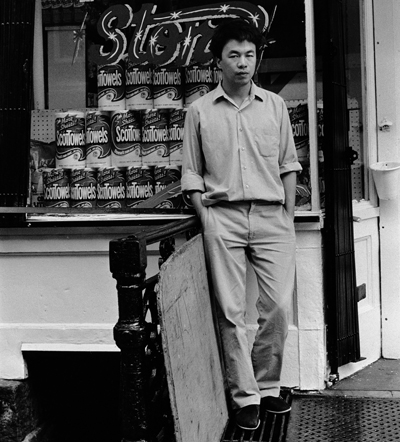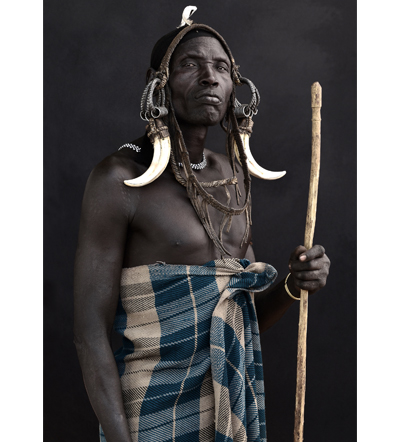
![]()
Peter Sekaer began touring the United States as a government photographer in 1936, documenting derelict cities and stricken farmland. His work, the focus of Signs of Life: Photographs by Peter Sekaer opening at the International Center of Photography on September 9th, revels less in the pointed dramatization practiced by so many of his contemporaries. Rather than produce a poised Migrant Mother, Sekaer drew his lens back and merged environment with sitter. His subjects’ everyday functionality in their new, extraordinary circumstances provided Sekaer’s narrative. The overall tableau is something very akin to what the unaffected human eye experiences.
Click for Slideshow


Courtesy Daniele Tamagni and Danziger Projects

![]()
![]()
In the troubled southern suburbs of Brazzaville, the Congo’s capital city, a resilient group of men have traded arms for Armani. The sapeurs, as captured in Daniele Tamagni & Africolor at Danziger Proejcts through September 10th, are Congolese men who abide by a strict moral code that’s signaled publicly by their equally rigorous dress rules. Tamagni, an Italian photographer working in several African regions, has produced photographs that reveal men in impeccably tailored, brilliantly colored three-piece suits, brandishing canes and cigars in the middle of slum neighborhoods. These men save up for months—often years—for an outfit.
Though the Sape movement first gained popularity as a way of resisting the 1970s national ban on western clothing, Tamagni no longer sees it as politically motivated. Today he sees it as both a form of “social affirmation,” and as an art in its own right. Not only is “dressing up a way to escape and forget poverty…but also their aesthetic is amazing, because they re-mix and re-interpret the Western brand outfits.” If fashion has truly become a life philosophy for the sapeurs, it’s clear that it’s a living, breathing dogma. “It’s a mix of dandyism with old colonial accessories and hip-hop style,” Tamagni explains. “It’s impossible to define their aesthetic.”
(more…)


Ai Weiwei. Williamsburg, Brooklyn. 1983. Courtesy of Three Shadows Photography Art Centre and Chambers Fine Art.
Years before becoming the loudest voice of political dissent in the Chinese art landscape, 24-year-old Ai Weiwei arrived in a New York City seething with very different tensions from those of his hometown Beijing. His documentation of those years, now on display at the Asia Society through August 14 in Ai Weiwei: New York Photographs 1983 – 1993, reveal a young artist investigating his interests in an unknown city.
The exhibition is divided roughly in two, with half the photographs showing members of Ai’s inner circle, and half portraying the city’s social wars from a resolutely street-level perspective. This portrait of New York is intimate. Photos of AIDS protests being broken up, ruined Bowery storefronts being taken over by stray dogs, and a diminutive Al Sharpton facing crowds at a Tawana Brawley demonstration all speak to Ai’s devotion to activism while remaining wholly present in the moment. A 1989 series depicting shaggy, joint-smoking protestors in Tompkins Square Park is equally effective as an image of modern American advocacy and as an implicit comparison with the bloody Tiananmen Square protests of the same year.
(more…)


Bersidi, Mursi Man, March 2011
Austrian-born photographer Mario Marino has spent the last few months in the South Ethiopia’s Omo River Valley taking what he calls “photographic psychograms” of its inhabitants. Each gorgeously spare portrait represents a different micro-culture of the region, which Marino chose for its incredible density of distinct ethnic minorities.
“Faces of Africa” is a race against time of sorts. Marino searches the smallest, furthest villages for people whose heritage is under assault by the potent forces of tourism, technological advancement, and social globalization. His chosen method of preservation is to record a culture’s mark upon the body: white chalk used as face paint, intricate patterns shaved into hair, and throughout the portraits, ornaments made from the matchless leaves and shells of the South Ethiopian terrain. The sitters literally wear their homeland, supporting the claim of couturiers and choreographers everywhere that the body is simply one more medium for communication.
Click for slideshow






 Facebook
Facebook Permalink
Permalink Digg
Digg Reddit
Reddit LinkedIn
LinkedIn StumbleUpon
StumbleUpon Tumblr
Tumblr
